Early winter viewing, part 1
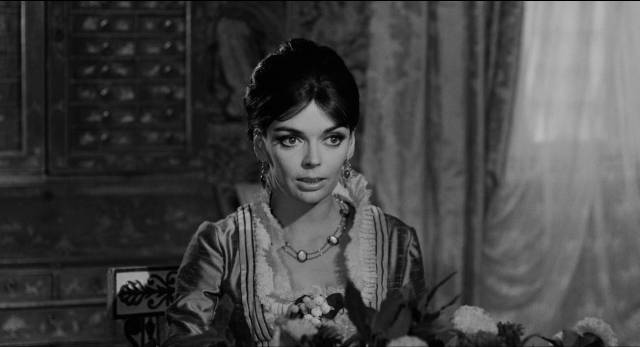
Here we are again, with a long list of movies I haven’t got around to saying something about over the past couple of months. I don’t think I’m watching more these days, so am I writing less? If I could afford to retire, I’d probably be posting several times a week, but as that’s not possible I’ll at least try to “catalogue” my viewing every two or three months so that all these unacknowledged disks don’t nag at me from the stack beside my desk.
Vinegar Syndrome & Partners
I just posted a couple of long pieces about watching Vinegar Syndrome’s October releases, but I’ve seen more than half a dozen other titles from them since writing those comments, mostly older releases. I should be receiving a big box any day now from their Black Friday sale[1] – including Paul Morrissey’s Flesh for Frankenstein (1973), for which I’ve been waiting for quite a while (I’ve been holding off watching Severin’s edition of Morrissey’s Blood for Dracula [1974] since it came out six months ago, so I can watch them together). The ones below are split between older VS disks and more recent releases from partner labels.
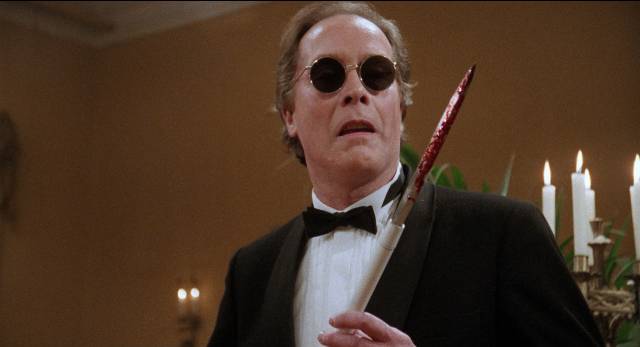
Rest in Pieces (José Ramón Larraz, 1987)
Although a friend who shares my addiction to exploitation movies had told me he found José Ramón Larraz’s Rest in Pieces (1987) boring and hadn’t actually finished watching it on Amazon Prime, I ordered the Blu-ray. This was mostly due to my urge to be a completist; I already had the other two movies Larraz made in the States late in his career, so I needed this one. It’s certainly not his best, even from this period – that would be Edge of the Axe (1988). The story of a young couple who inherit a substantial estate which turns out to have a bunch of creepy tenants has some effective moments of both horror and comedy, sometimes simultaneously, with a neat revelation part way through about the identity off those tenants. Its biggest weakness is the central couple; not only uninteresting as characters, they are performed with irritating amateurishness by Lorin Jean Vail and Scott Thompson Baker – the collection of murderous villains completely eclipse them.
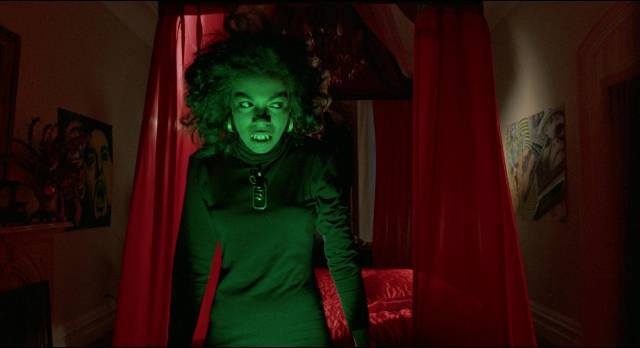
Def By Temptation (James Bond III, 1990)
I didn’t know what to expect from Def by Temptation (1990), the only writing and directing credit of former child actor James Bond III, but was surprised that it isn’t better known (or maybe it is and I just somehow missed it). With striking cinematography by Ernest Dickerson (shot between Spike Lee’s Do the Right Thing and Mo’ Better Blues) and a script steeped in indie rather than mainstream horror – a stylish update of such ’70s movies as John Hayes’ Grave of the Vampire, Richard Blackburn’s Lemora and, of course, Bill Gunn’s Ganja and Hess – it’s a dreamlike meditation on religion and addiction in the form of a vampire movie. Bond plays a Southern preacher who’s begun to doubt his faith and visits an old friend in New York just as a seductive woman (Cynthia Bond) is killing a string of men she picks up in local bars. Steeped in atmosphere and sensuality, with strong doses of violence, the film was surprisingly picked up by Troma, who provided finishing funds; it must be the classiest movie Lloyd Kaufman ever put his name on.
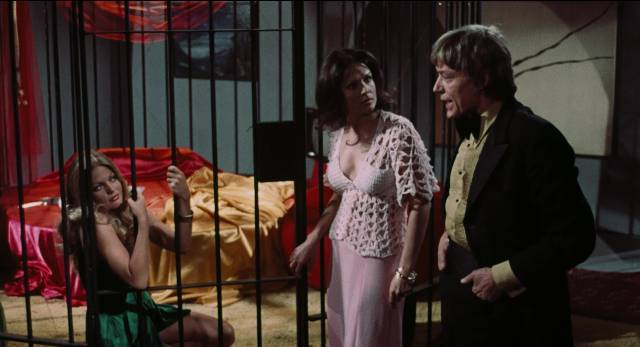
Pets (Raphael Nussbaum, 1973)
At first glance, Raphael Nussbaum’s Pets (1973) looks like a routine ’70s slice of sleazy exploitation, but it turns out to be a bit more ambitious – like Stanley H. Brasloff’s Toys Are Not For Children (1971). Like Candy, runaway Bonnie (Candice Rialson) encounters a series of unsavoury people in Los Angeles as she escapes her violently possessive brother. First she’s given a lift by Pat (Teri Guzman), who gets her involved in kidnapping and robbery; then she’s rescued from the police by artist Geraldine (Joan Blackman) who takes her in as a model, although her sexual intentions quickly become apparent; then there’s gallery owner/art dealer Vincent Stackman (Ed Bishop), who becomes infatuated with his client’s model and turns out to “collect” living women in cages in his cellar. As in Candy, Bonnie holds on to her innocence through it all.
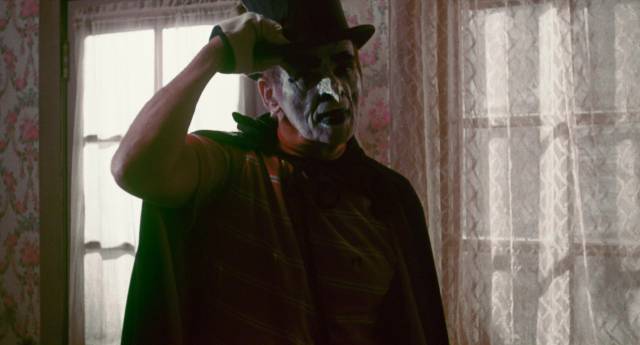
Pigs (Marc Lawrence, 1973)
A familiar face who appeared in hundreds of movies and TV shows during a seven-decade career (he worked into his early 90s), character actor Marc Lawrence tried his hand at directing in the ’60s with a handful of television gigs and a little-known noir feature called Nightmare in the Sun (1965), which had a fairly impressive cast. Then eight years later, he returned with his second (and final) feature, an oddity which draws on the period’s atmosphere of transgressive horror (it would make a good all-nighter with Tobe Hooper’s Texas Chain Saw Massacre and Wes Craven’s The Hills Have Eyes). Strangely, Pigs (1973) seems to be a family affair, with the two lead roles written by Lawrence for himself and his daughter Toni, their characters coming together in a psychologically twisted tale of madness and violence. She’s Lynn, who flees to the California desert after escaping from a psychiatric hospital where she was locked up after killing her father, who had raped her. Lawrence himself is Zambrini, owner of a grungy roadside diner with a barn full of pigs out back. He’s despised by his neighbours who complain about the noise the pigs make at night – when he’s feeding them the bodies of people he’s killed. Lynn takes a job at the diner and the intersection of their separate pathologies leads to more violence, with Lynn increasingly losing her tenuous grip on reality.
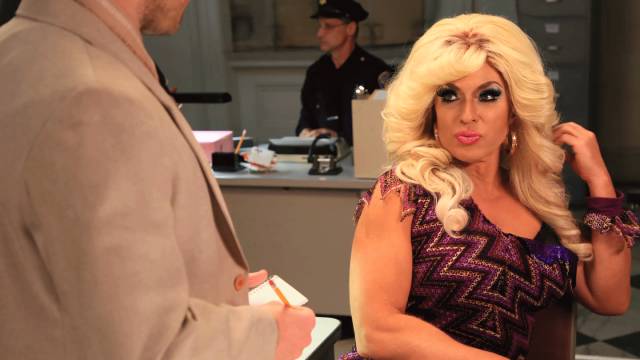
Shit & Champagne (D’Arcy Drollinger, 2020)
Despite the title, Shit & Champagne (2020) is too good-natured to be as transgressive as the iconic movies John Waters made with Divine. Expanded from a live show, D’Arcy Drollinger’s noir-in-drag has popular stripper Champagne White (Drollinger) embarking on her own investigation after the police show little interest in finding the thugs who killed her fiance. Candy-coloured design, musical numbers and a hot romance between Champagne and Detective Hammer (Seton Brown) give the movie a buoyant atmosphere which reveals how much has changed since the ’60s and ’70s. The aggressively funny, in-your-face affronts of Divine and Waters no longer seem necessary; drag has been absorbed and normalized in popular entertainment to the point where this can be played as light-hearted fun. (Utopia Blu-ray)
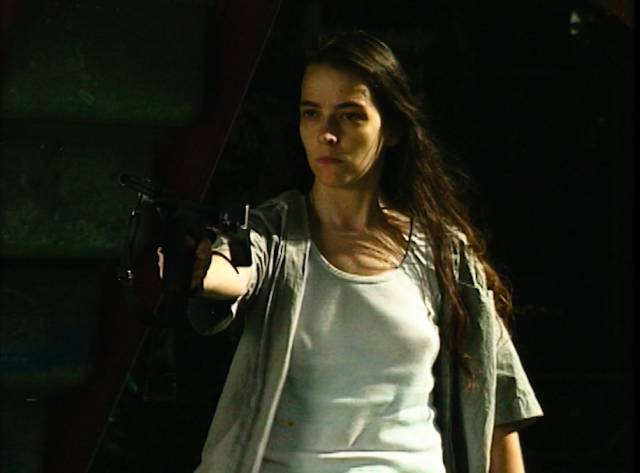
Shatter Dead (Scooter McCrae, 1994)
I may have expected too much from Scooter McCrae’s Shatter Dead (1994), a shot-on-video indie zombie movie from that genre’s wilderness years between Romero’s Day of the Dead and the popular explosion of The Walking Dead and its offshoots. I’m partial to the genre and always on the look-out for variations which deviate from the perhaps too-familiar commercial mainstream. I love everything from Marc Price’s Colin (2008) to Kiah Roache-Turner’s Wyrmwood (2014) and the BBC’s In the Flesh (2013-2014), and hate Zack Snyder’s Dawn of the Dead (2004) and Marc Forster’s World War Z (2013). Shatter Dead shares a few similarities with the BBC series, with the dead more sad than threatening, hanging out on street corners pan-handling rather than ripping out throats. Their inability to die definitively puts them in an odd state of existential stasis, with some resentful of the living and hoping to persuade people to commit suicide and join them. A woman makes her way through this declining world, looking for her lover, encountering various living and dead along the way and not always able to tell the difference. The movie’s indie origins give it a generally sombre tone, with enough nudity, sex and violence to give it semi-underground cred. But even at only seventy-five minutes I found it a bit thin and too leisurely paced to really grab by attention. (Saturn’s Core Blu-ray)
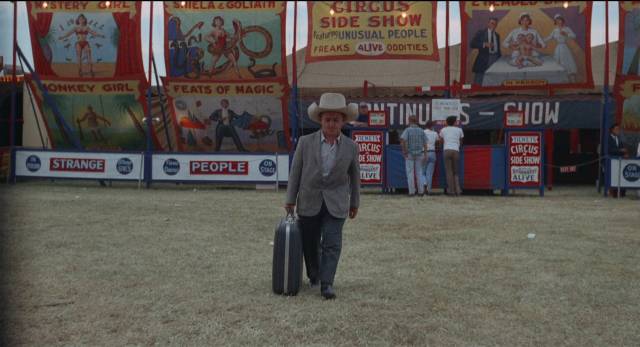
She Freak (Byron Mabe, 1967)
David R. Friedman was an exploitation producer whose name was as well known (in some cases even better known) than the directors he worked with – most famously, he teamed with Herschell Gordon Lewis for a string of cheap sex and gore movies in the ’60s. Friedman was a great huckster, perhaps not surprising since he got his start as a carnival barker, a background he brought to bear on She Freak (1967), a loose and garish riff on Tod Browning’s Freaks (1932). Directed by actor and occasional director Byron Mabe, it lacks the nightmarish artistry of Browning’s masterpiece, but makes up for that with its documentary depiction of carny life, spending a lot of its running time showing how the midway and sideshows are broken down, transported and reassembled at the next stop. The thin story tacked on to this material, written by Friedman himself, is a bit of a mess that fails to build any dramatic momentum. Small-town waitress Jade (Claire Brennen) can’t wait to see the world, so when the show hits town she applies for a job. A hard worker and likeable, she gets on well with most people and eventually hooks up with wealthy Steve St. John (familiar character actor Bill McKinney in his first role); they get married, but she’s drawn to rough carny Blackie (Lee Raymond). This leads to murder and finally the awful revenge of the sideshow folk who turn her into a freak herself. Jade’s transformation from likeable to vicious bitch has no visible dramatic motivation, so it all seems kind of random – but the documentary footage makes She Freak worth watching. (AGFA Blu-ray)
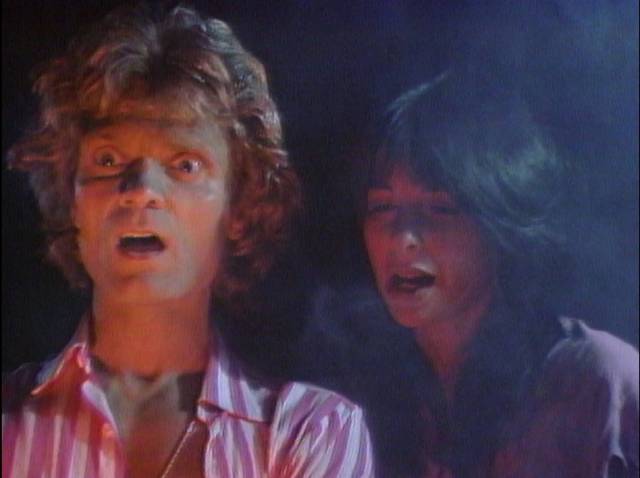
Boardinghouse (John Wintergate, 1982)
Sometimes something turns out to be so unexpected that I find myself grinning like a fool as I watch. That happened with John Wintergate’s Boardinghouse (1982), which appeared to be yet another cheap early ’80s direct-to-video slasher. But it quickly revealed itself to be something other – strange, disconcerting, funny – which only grew more interesting as I learned more about its production history and the people who made it. I ought to write about it at more length, and perhaps will at some point. Reputed to be the first direct-to-video horror feature, it was also the only DTV movie blown up to 35mm and given a theatrical release back in the pre-digital era. The mix of sex, violence, mysticism and strange performances (particularly by director-writer-star Wintergate) makes it feel like something from a parallel universe where people function differently from us. The over-stuffed two-disk edition from AGFA has three different versions – theatrical (transferred from a battered print), the original longer home-video version and a re-edited video cut – plus a second, previously unreleased feature, Sally & Jess (1989), which looks superficially like a standard family drama, but also plays in oddly skewed ways, obviously made in that same alternate reality.
Wintergate and co-star Kalassu have a band called Lightstorm (apparently based in Vancouver) which has a New Age vibe – they’re into Indian mysticism, meditation, “universal love” and cosmic consciousness, which makes the sex and violence in Boardinghouse that much more unexpected. The disk includes a half-hour of band promotion and music videos, one of which bent my brain even more as it includes a lot of on-screen text suggesting right-wing libertarian tendencies and conspiracy thinking, though I haven’t been able to find much more information about them online. There are a lot of videos on their website but I haven’t had the stamina to get into them. (AGFA Blu-ray)
*
Severin
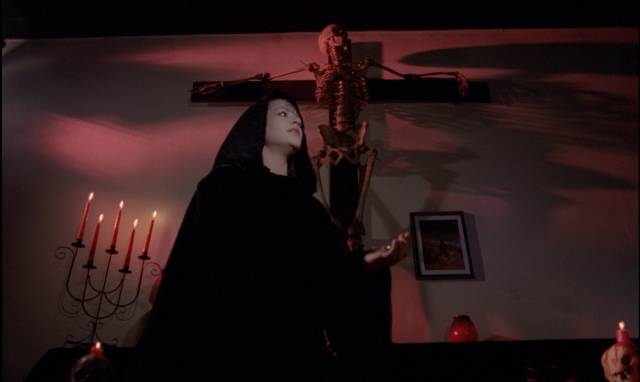
Midnight (John Russo, 1980)
It must be difficult to be involved with a movie which causes seismic waves in popular culture, only to see others involved go on to forge significant and influential careers while you yourself never manage to escape the fringes where hard toil seldom pays off. John Russo seems like a nice guy, but in interviews there often seems to be an undertone of bitterness – how could he not be a more prominent and successful figure when he co-wrote the game-changing script of Night of the Living Dead (1968)? As George A. Romero became an iconic figure, Russo plugged away, writing pulp horror novels and a couple of books about low-budget filmmaking, and occasionally making his own severely underfunded movies. While his persistence is admirable, those movies do tend to highlight where the driving talent behind Night of the Living Dead resided.
Midnight (1980) was Russo’s second outing as writer-director and seems to belong to an earlier era – it would have fitted more comfortably among the regional drive-in movies of the early-to-mid-’70s, rather than the post Halloween and Dawn of the Dead period when relatively low-budget horrors were breaking into the mainstream with considerable commercial success. Russo’s movie is awkwardly structured and spends a lot of its running time ignoring its own horror elements. After a prologue in which a family finds a young woman caught in an animal trap and instead of rescuing her promptly kill her, we’re introduced to a young woman hitting the road to escape her abusive stepfather. As she hitches rides, her stepfather sets out to find her. On the road with a couple of guys – one white, one Black – she learns the tricks of survival, but also some hard realities about America; her Black companion is murdered by racist cops and as she and the other guy try to escape they end up in the hands of a family of Satanists looking for humans to sacrifice.
It’s unclear whether anyone in the audience is likely to realize that the Satanists are the kids from the prologue all grown up and carrying on the family tradition. Although the story is all over the place, individual elements are sometimes effective. Strangely, the best parts of the movie are those in which the three companions travel through rural America with a doomed belief in the freedom of the road, destined to be stripped of their illusions by rednecks. The Satanic element seems almost tacked on at the beginning and end.
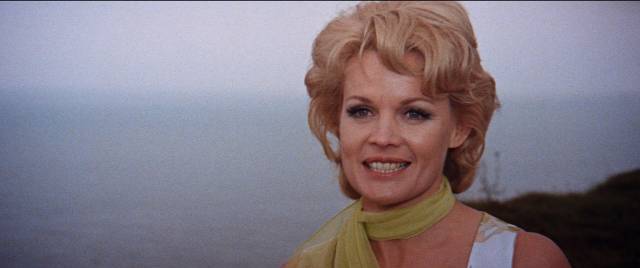
The Fourth Victim (Eugenio Martin, 1971)
Made just before Horror Express (1972), Eugenio Martin’s The Fourth Victim (1971) is closer to Umberto Lenzi’s erotic thrillers of the late-’60s than the full-blown gialli which were just showing up in Italy. That impression is reinforced by having Lenzi’s star Carroll Baker in the female lead. Martin’s movie pushes the mystery elements towards the realm of parody as everyone we meet is shifty as hell, hiding crucial information, behaving in ludicrously suspicious ways… That starts with Michael Craig as the wealthy Arthur Anderson, a man who has the misfortune to discover his third wife’s body face down in the swimming pool on his English estate. He and the maid behave strangely by carrying the body upstairs and putting it to bed before calling the authorities. The police aren’t convinced that she could have drowned in bed, and since both of his previous wives also died in peculiar circumstances, Anderson is charged with murder.
Thanks to the maid lying under oath, he’s declared not guilty at the trial and returns home to find a strange blonde swimming in the pool. This is his new neighbour, who gives her name as Julie Spencer (Baker). He tries to shake her off, but she’s very persistent and insinuates her way into his life. It’s no surprise to learn her true identity, but by then there’s another complication with yet another mysterious woman turning up on the neighbouring estate (Marina Malfatti), who turns out to be dangerously insane… At no point does the script (co-written by Santiago Moncada, who had co-written Hatchet for the Honeymoon for Mario Bava the previous year and would provide the story for Sergio Martino’s All the Colors of the Dark the following year) attempt anything like psychological plausibility or even consistent behaviour by the characters, but then those things were never a primary concern of the genre.
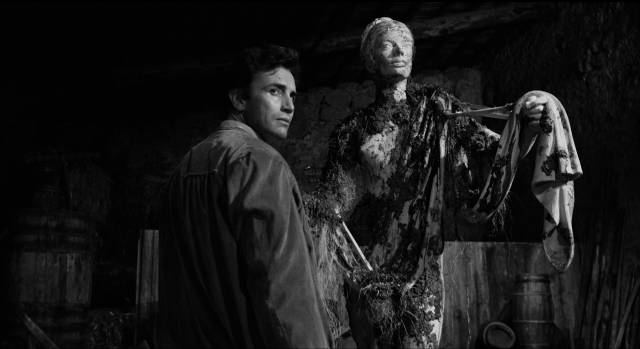
An Angel for Satan (Camillo Mastrocinque, 1966)
I’m not familiar with the work of Camillo Mastrocinque beyond this movie and the Christopher Lee-starring Crypt of the Vampire (1964), which is included in Severin’s Eurocrypt of Christopher Lee box set, both of which came near the end of a diverse three-decade career. An Angel for Satan (1966) was the last of a string of Italian Gothic horrors starring the uncanny Barbara Steele, made as that genre was deep in decline. That decline seems to inform the film, which plays with familiar tropes only to expose them in the end as illusions. Rooted in an ancient curse involving a centuries-old statue, it turns out that there are no dark supernatural forces at work after all; it’s all a mundane plot revolving around an inheritance with an unscrupulous character using hypnotism to convince Steele’s character that she’s possessed by a vengeful spirit.
Atmospherically shot by Giuseppe Aquari, with a moody score by Francesco De Masi, the movie is disappointing as horror, but nonetheless makes good use of Steele’s talent in what initially appears to be a dual role echoing her part in Mario Bava’s Black Sunday (1960); as Harriet the heiress she is appealing and vulnerable, but as Belinda she exudes a sadistic erotic authority which clouds the minds of the men around her, whom she delights in tormenting.
Jess Franco
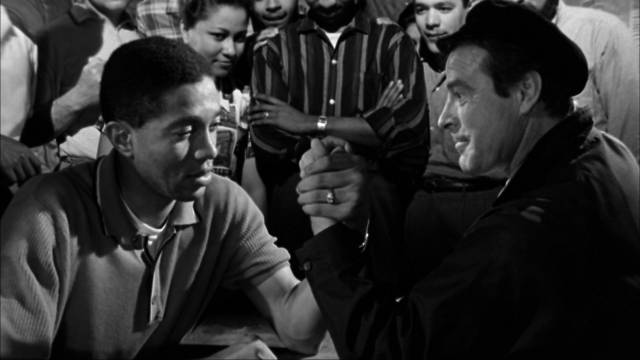
I’m not sure how I feel about Jess Franco, the incredibly prolific cult figure whose work eventually blurred all boundaries between various genres and pornography. His early work is rooted in recognizable commercial forms, but before long he showed a disinterest in the demands of those forms. His passionate admirers (like Tim Lucas and Stephen Thrower) will point to those early movies as proof that Franco was perfectly capable of making “normal movies”, so his abandonment of convention was a conscious artistic choice. Although I’ve only seen a fraction of his output (IMDb lists more than two-hundred directing credits, though no one really knows for sure), that abandonment has always seemed like sloppiness to me; he has his own fetishistic obsessions and he’s in such a rush to get to them that he barely sketches in mundane things like narrative and character to provide the most tenuous framework to support those obsessions. But this gives a kind of hermetic quality to his work; he makes his movies for himself with little or no concern for any potential audience, and the result is a bit like listening to someone go on and on about their dreams … but other people’s dreams are almost never of any interest.
That said, however, I find myself occasionally drawn back to Franco and recently I’ve found some of those dreams oddly appealing. Part of me feels resistant – who wants to admit they may have been wrong about something for decades? – but I must admit that Severin’s latest Franco releases have drawn me in despite that resistance.
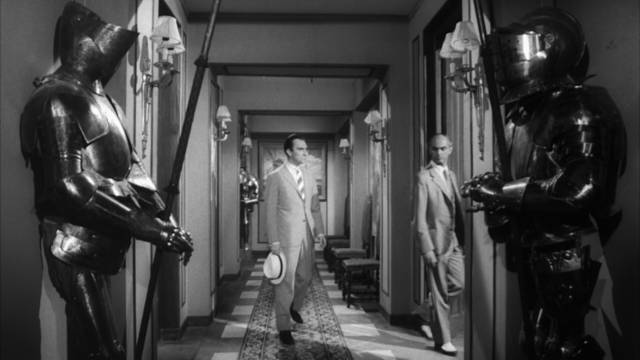
Franco Noir: Death Whistles the Blues/Rififi in the City (1962/1963)
Franco Noir contains a pair of movies from that early period when Franco was still making movies that resembled conventional features – this was when he was directing moody horror films like The Sadistic Baron Von Klaus and The Awful Dr. Orloff (both 1962). It’s reputed that Orson Welles was inspired by this pair of films noirs to hire Franco as his assistant/second unit director on Chimes at Midnight (1965). Both films are shot in striking black-and-white, with the skewed angles of noir creating an air of instability, underscored by jazz (there are a lot of nightclub scenes in both).
In Death Whistles the Blues, a man who was betrayed and framed returns to get revenge on the gangster responsible, while in Rififi in the City (which has nothing to do with Jules Dassin’s Rififi) a policeman works to take down a powerful politician who’s mixed up with organized crime. Franco displays a strong, assured grasp of the moral ambiguities which give noir its particular flavour, and both films have narrative momentum and well-defined formal qualities – things less apparent in his later, looser work.
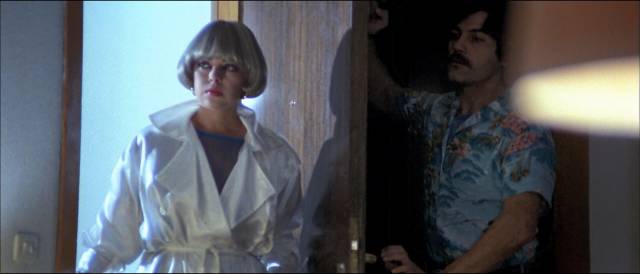
Black Boots, Leather Whip/The House of Lost Women (1983/1982)
Made two decades later, Black Boots, Leather Whip (1983) is also rooted in noir, but Franco doesn’t concern himself with the genre’s formal qualities. Shot in colour and with a more perfunctory visual style, the elements of the detective story, the moral ambiguities of the hero, become virtually abstract. The focus is more on foregrounding the sexual power of the femme fatale to cloud the hero’s mind and lead him to his doom. The mechanics are visible, but Franco seems completely disinterested.
A seductive woman visits a private eye, offering money for him to retrieve something important to her. They immediately engage in explicit yet oddly unerotic sex. He heads off to a scrap yard to retrieve what she’s lost and is attacked by a couple of men. There are other encounters with the woman, more sex, and by the end we realize that he has been manipulated by her to free her from a situation which has held her captive. There are pursuits, fights, murders … but what matters is the sex and the way she uses it to control the detective who is destroyed because he lets his dick do the thinking for him.
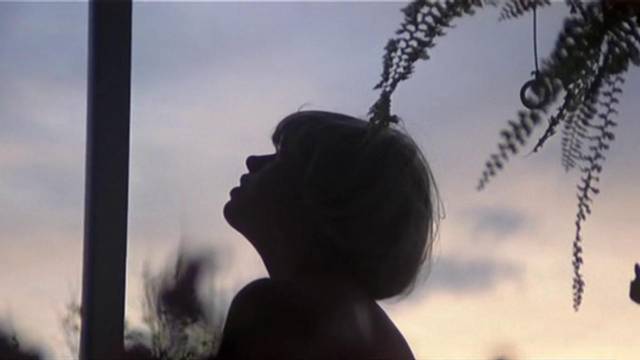
In The House of Lost Women (1982), a family lives in isolation on an island. The bored daughter wanders the beach and indulges in autoerotic reveries, occasionally trying to seduce her violent and controlling father. This state of familial stasis is disrupted by the arrival of a young man whose presence causes the gradual implosion of the family. Lushly photographed, languidly paced, lingering on the erotic presence of Franco’s star and partner Lina Romay (who was the other film’s femme fatale), the movie has a seductively oneiric quality, a little like a cross between Jean Rollin and Walerian Borowczyk.
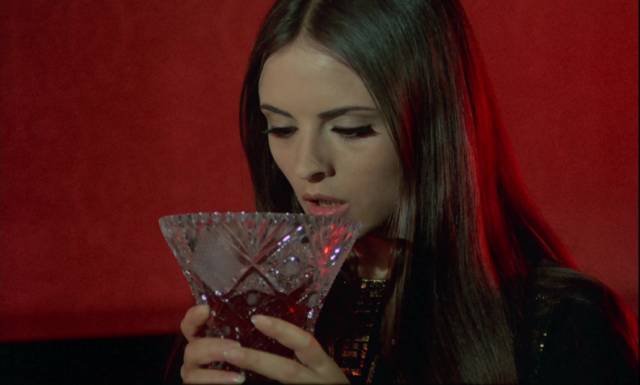
Vampyros Lesbos/She Killed in Ecstasy (1970)
As my experience with these four movies was fairly positive, I went on to a pair of Franco’s more famous titles, which fall at the midpoint between the two noirs and the later pair. Both Vampyros Lesbos and She Killed in Ecstasy were made in 1970 and starred Franco’s muse at the time, Soledad Miranda. By this time the strictures of conventional narrative were obviously of little interest to Franco; each film presents a loosely connected flow of incidents held together by an almost fetishistic attention to Miranda’s considerable erotic presence.
In Vampyros, she’s the heir of Dracula who exerts an almost hypnotic pull on Linda Westinghouse (Ewa Stromberg), the woman sent to finalize the legal settlement. In wilful defiance of accepted vampire lore, the film takes place on a sun-baked island where the Countess lounges on the beach below her bright modernist villa and invites Linda to go skinny-dipping in the sea. Here, vampirism isn’t used as a coded stand-in for sexual desire; the two are one and the same. The two actresses embody Franco’s fascination with female sexuality, which exhibits none of the puritanical fear which so often accompanies expressions of female desire in more conventional horror movies.
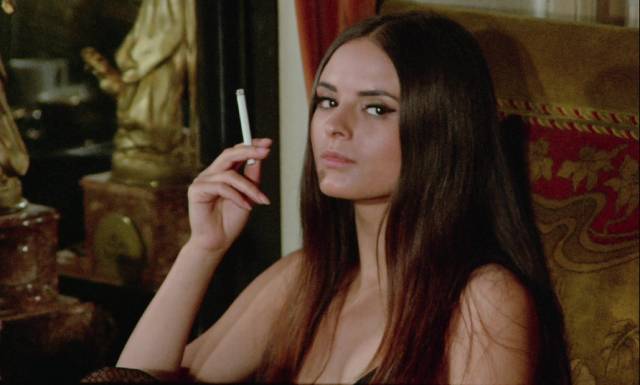
in Jess Franco’s She Killed in Ecstasy (1970)
She Killed in Ecstasy, made quickly on the heels of Vampyros Lesbos, flows less smoothly. Here Miranda is the wife of a doctor who, having been censured by medical authorities for his unsanctioned experiments, goes mad and kills himself. She sets out to destroy those who were on the committee responsible, seducing and killing each in turn. It’s a kind of riff on The Bride Wore Black (1968), but without much suspense or narrative tension; rather, it’s a series of almost self-contained set-pieces which exist to allow Franco to linger on the erotically charged presence of Miranda.
Miranda appeared in two more films by Franco, but she had already died in a car crash in 1970 before Vampyros Lesbos was even released, aged only twenty-seven. It’s an indication of how fast he worked that he had completed at least four movies with her which were released after her death. A couple of years later, Franco met Lina Romay, who in turn became his muse and partner (eventually his wife), appearing in over a hundred of his movies before her death in 2012.
All of these Severin disks display strong image quality, all the more impressive given the complicated production and distribution histories of Franco’s work. Each disk gets a background interview by Franco-admirer Stephen Thrower and brief interviews with Franco himself. There’s a featurette on Miranda, an interview with actor Paul Muller, a commentary on Black Boots and an audio essay on The House of Lost Women.
_______________________________________________________________
(1.) I’m running the risk of seeming like a shill for Vinegar Syndrome because of how much I order from them, the sheer volume getting in the way of other viewing. The big November shipment arrived on December 10. In addition to the Flesh for Frankenstein box set (containing HD 3D, anaglyph 3D and flat options), the box included VS’s resurrection of a never-completed ’80s low-budget martial arts movie called New York Ninja (John Liu/Kurtis M. Spieler, 1984/2021), plus Tiger Claws 1-3 (Kelly Makin/J. Stephen Maunder, 1991-2000), Creature (William Malone, 1985), Steel and Lace (Ernest Farino, 1991), Memorial Valley Massacre (Robert C. Hughes, 1988), Zombie 3: Killing Birds (Claudio Lattanzi, 1987), The Eleventh Commandment (Paul Leder, 1987), Deadly Games: Dial Code Santa Claus (Rene Manzor, 1989), Best Friends (Noel Nosseck, 1974), TC 2000 (T.J. Scott, 1993), The Severed Arm (Thomas S. Alderman, 1973), Perfect Strangers (Larry Cohen, 1984), Graduation Day (Herb Freed, 1981), Don’t Answer the Phone (Robert Hammer, 1979), Censor (Prano Bailey-Bond, 2021), Ebola Syndrome (Herman Yau, 1996), Trauma (Dario Argento, 1993) – and from some VS partners: Radio On (Christopher Petit, 1979), mostly a duplication of the recent BFI edition, bought mainly because it has a commentary track by Kier-La Janisse; Summer of Fear (Wes Craven, 1978), Keep an Eye Out (Quentin Dupieux, 2018), Knocking (Frida Kempff, 2021), plus three AGFA releases: What Really Happened to Baby Jane? and the Films of the Gay Girls Riding Club (Ray Harrison, 1962-72), The Films of Sarah Jacobson (Sarah Jacobson, 1993-96) and Blood-a-Rama Triple Frightmare (Various, 1970-74). (return)
Comments